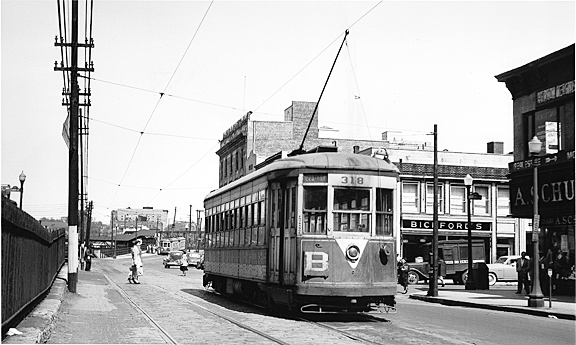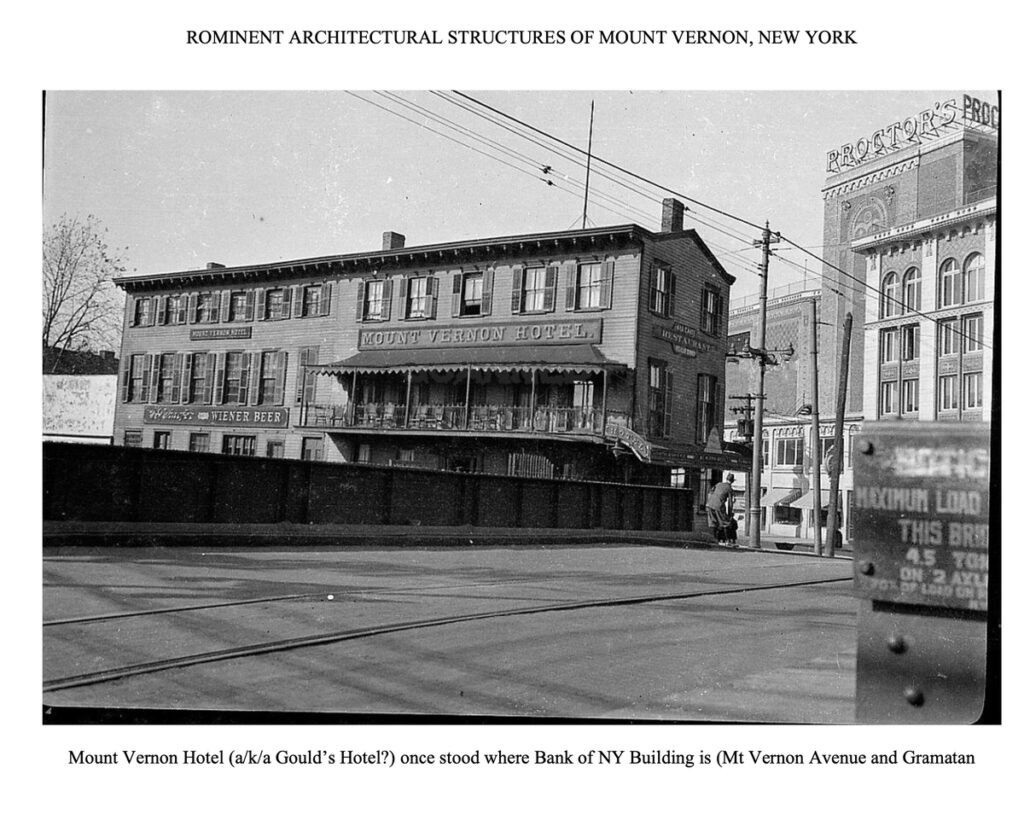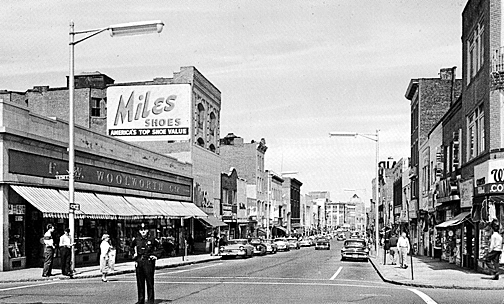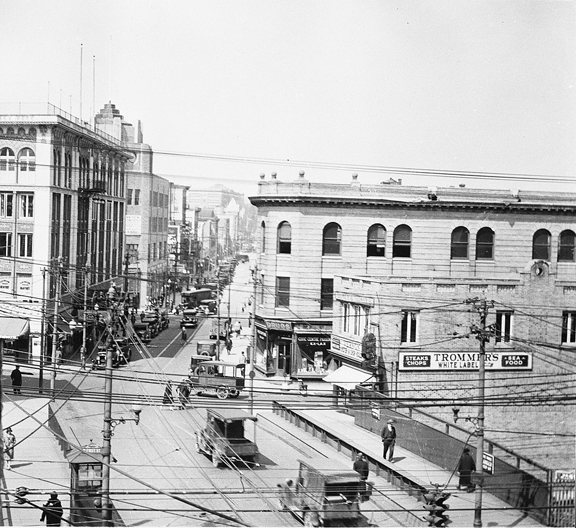Landmark Collection
Click on arrows on the side to scroll thru the collection

The New York-New Haven Railroad was only one of five major thoroughfares tying Mount Vernon to New York. In 1892, due to numerous pedestrian deaths it was decided to lower the railroad tracks and build six bridges spanning the “cut”. Italian immigrants were used to dig a “cut” about sixty feet deep, along First Street, across the middle of the city. The “cut” forever affected people’s perceptions of the city. In 1937, The Daily Argus wrote, “It seems almost inevitable that a city shall have locale known as ‘the other side of the tracks.’ In the case of Mount Vernon, the wrong side of the tracks has been the southwest sector known as the south side.” There have been a century of proposals to cover “the cut.” It remains a scar dividing the city north and south. 
This is a 1878 picture of the Department of Public Works and Sanitation. These wagons are collecting refuse at the south west corner of Third Street and Fourth Avenue. Hallock’s Bakery is in the background. 
The Westchester-Boston Railroad train was discontinued in 1925. It had three stations in Mount Vernon including a trendy depot at Third Street and Fulton Avenue. On May 15, 1941 the elevated Lexington Avenue train terminal station from New York City at Dyre Avenue opened. It was on the southern border between the Bronx and Mount Vernon. It was the second New York City elevated and subway line terminating at Mount Vernon. The first mass transit train was the Seventh Avenue line. It terminated at 241st Street and White Plains Road. Pictured is a 1954 photography of the last run of the First Street trolley which took passengers to the 241st Seventh Avenue subway line. 
In 1947 Fourth Avenue was a busy two block downtown strip with an enviable bustling pedestrian traffic. Today, we cannot imagine that the narrow one way street ever accommodated two-way automobile traffic. The Department of Public Works truck was picking up commercial trash. Even today, driving and parking on “The Avenue” remains a shopping challenge. 
In 1851, there were only a handful of houses. At the heart of the settlement were a small train depot, a single direction rail track and a hotel aptly named the Mount Vernon Hotel. The hotel was at the southwest corner of what is today Gramatan and Fiske Place. The property included land later occupied by a bank, City Hall, and the Proctor and Lucas buildings. George Gould, proprietor of the hotel, embraced John Steven’s vision to build a community within a half hour of New York City by railway. His hotel was the cradle of Mount Vernon’s earliest civic and social life. George’s son, Theodore was the first child born in the village and was presented with a lot at the corner of Eighth Avenue and First Street. Modern politicians have sought the secret to Gould’s success with hotel services centered around the train station. In the past few years there were plans for a hotel near the railroad depot. 
The old shopkeepers “On The Avenue” closed their doors when their children did not return to carry on the businesses. The quality and diversity of the new enterprises did not measure up to the shops that lined Fourth Avenue during its “golden days” when customers from across the County came to the city to patronize the stores. The Woolworths Store at the northwest corner of Second Street and Fourth Avenue was torn down and replaced with a less than memorable McDonalds. The fast food restaurant closed and became a open-air fruit and vegetable market. 
By mid-twentieth century, the same forces that initiated the founding of the city one hundred years earlier were at work shaping its future. Mount Vernon’s proximity to New York City and the post-World War II steady influx of new residents seeking affordable suburban homeownership led to the city becoming one of the most densely populate cities in the nation. Available rail transportation and expanded parkway construction remained deciding factors to purchase or rent in the city. This above view of Mount Vernon East showed the growing phenomena of park and ride. Grand Central was only twenty-two minutes away. 
Mount Vernon’s first ambulance service was initiated by popular subscription on July 22, 1893. Mount Vernon hospital is in the background of the photograph. Dr. Archibald Banning, police and ambulance surgeon promoted the service. From left to right are Dr. Banning, Fred Davis, James Fitzpatrick (driver) and Arthur Keeler (holding the horses). 
This picture of the bridge over the train tracks from South Fourth Avenue looking northward up Gramatan Avenue illustrate the transformation of the strip between 1924 to present. The two-story Lucas building at the corner of Fiske Place and Gramatan (right) served as City Hall. The current one on Roosevelt Square was completed in 1929. By mid-century, storefronts were modernized, the streets widened, repaved and poles and wires removed. Two floors were added to the Lucas Building.
Download Collection
Download Collection Description
| File | Size | Type | Last Modified | Download |
|---|---|---|---|---|
| Landmark Collection v_1 | 2.64 MB | ZIP | 2022/06/01 | DOWNLOAD |